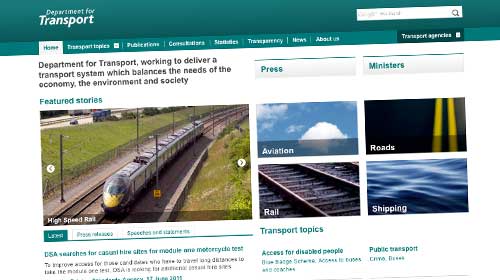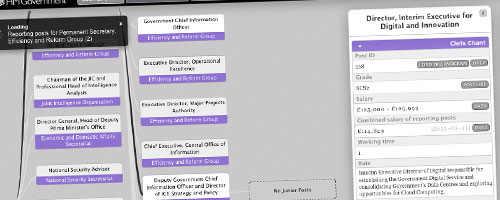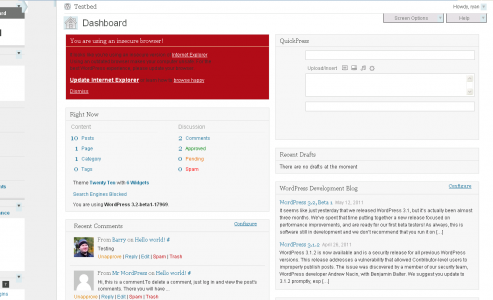Liam Maxwell is head of ICT at Eton College, and a Conservative councillor in Windsor & Maidenhead. He co-wrote a 2008 paper for the Tories on ‘Open Source, Open Standards: Reforming IT procurement in Government’, plus the 2010 paper ‘Better for Less‘ for the Network for the Post-Bureaucratic Age, in which he declares:
British Government IT is too expensive. Worse, it has been designed badly and built to last. IT must work together across government and deliver a meaningful return on investment. Government must stop believing it is special and use commodity IT services much more widely. As we saw with the Open Source policy, the wish is there. However, the one common thread of successive technology leadership in government is a failure to execute policy.
There is at last a ministerial team in place that “gets it”. The austerity measures that all have to face should act as a powerful dynamic for change. Let’s not waste this great opportunity to make British government IT the most effective and least expensive service per head in Western Europe.
And as from September, according to Guardian Government Computing, he’ll be taking a sabbatical from his day job, and advising the Efficiency and Reform Group [ie Ian Watmore] and the government chief information officer [Joe Harley] ‘on new ideas for the government’s use of technology’.
Maxwell was the Windsor & Maidenhead councillor who drove the debate a year or so back, on councils switching to Open Document Format (‘OpenOffice’ to you and me, although there’s more to it than that)… with savings in the tens of millions promised. There’s a nice interview with Charles Arthur from last summer, in which he talks through his ideas, with one rather interesting quote in the light of today’s news:
[Office software procurement is] a dysfunctional market because it’s set by standards which are set at the centre. Only the Cabinet Office can set this standard. It does sound a bit wet [to be waiting for that instead of just doing it in the council] but this is what’s actually stopping it happening.
A case of being careful what you wish for, perhaps? 🙂
I find it very hard to find much in Maxwell’s writing that I disagree with; and indeed, you’ll find many similar sentiments through the archives of this very blog, going back several years. It could get very interesting from here.
Update: it turns out this was announced on the Cabinet Office website last week. They’ve listed the areas he’ll be looking at:
- develop new, more flexible ways of delivery in government
- increase the drive towards open standards and open source software
- help SMEs to enter the government marketplace
- maintain a horizon scan of future technologies and methods.
Update 2: Liam is on Twitter, and has just tweeted:
Sad to be resigning as a councillor http://bit.ly/m09Uhi but its for a good reason http://bit.ly/keH94z
The new appointment means he has to resign his council seat. He’s also putting his (admittedly rarely updated) personal blog on hold ‘for now’… but with a promise to restart a new blog out of the Cabinet Office.









